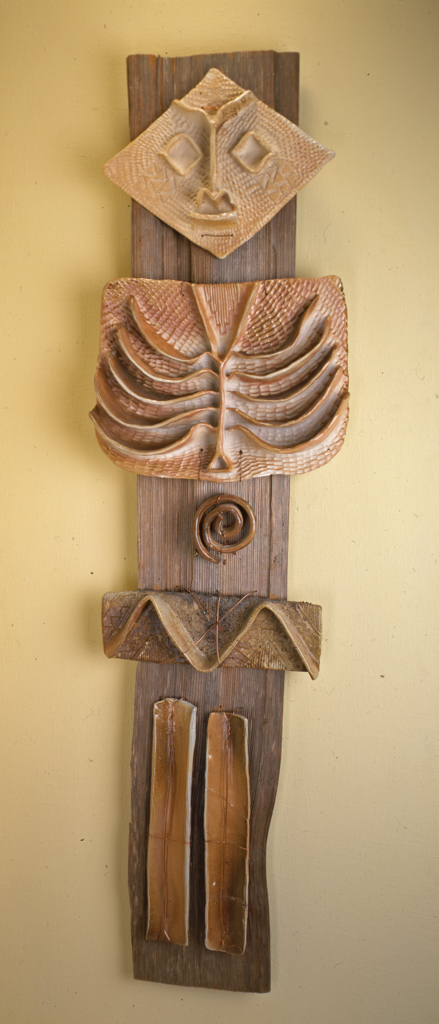Wasco Totem

Lillian Pitt, Wasco Totem, 1996, Anagama fired clay, cedar, and copper wire, Museum Purchase: Auction Proceeds Fund, © Lillian L. Pitt, 2000.34
This work is not currently on view.
- Title
Wasco Totem
- Artist
Lillian Pitt (American, Wasco, Yakama, and Warm Springs, born 1944)
- Date
1996
- Medium
Anagama fired clay, cedar, and copper wire
- Dimensions (H x W x D)
56 in x 18 in x 5 in
- Collection Area
Native American Art; Modern and Contemporary Art
- Category
Plateau
Western Oregon
Sculpture
- Object Type
sculpture
- Culture
American
- Cultural Group
Interior Salish
Warm Springs
Wasco
- Tribe/Nation
Yakama
- Credit Line
Museum Purchase: Auction Proceeds Fund
- Accession Number
2000.34
- Copyright
© Lillian L. Pitt
- Terms
Lillian Pitt is a local Native American artist whose work reflects her Wasco heritage. She did not become an artist until age 38 when she began working with clay. Now, Pitt works with a variety of materials and is a renowned sculptor, jeweler, and printmaker, as well as an advocate for Native American art. She is especially well known for her masks and other small clay figures that are inspired by the stories of her people that she was taught as a child. The petroglyphs along the Columbia River and other traditional Wasco images have also served as a major source of inspiration. In Wasco Totem, Pitt has created clay forms with traditional Wasco motifs that are similar to those found on baskets, beadwork, and stone carvings. These clay pieces are then assembled on a rough-hewn board and attached with brass nails and wire. The result serves as a monument to the Wasco people. The similarity of the image to a crucifixion also refers to the tremendous struggles that the Wasco and other Native Peoples have endured.









